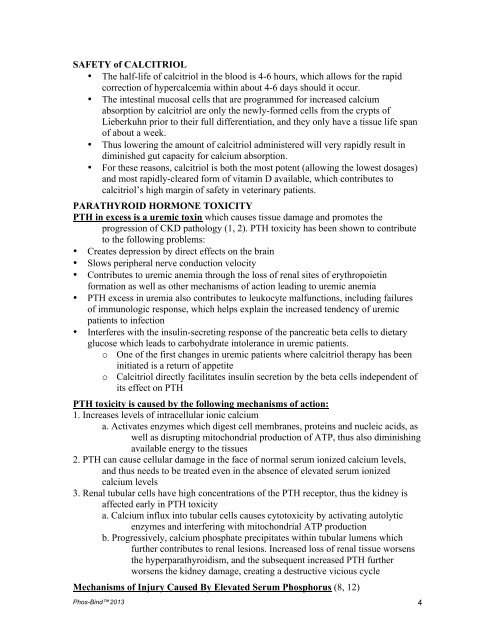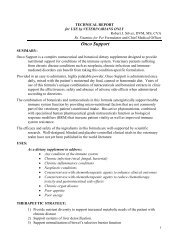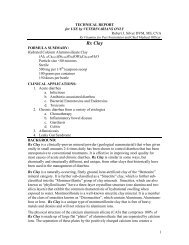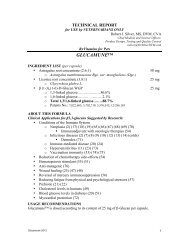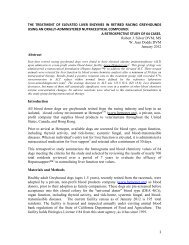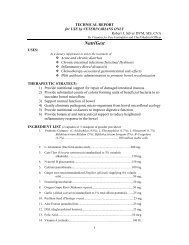PHOS-BIND™ - R X Vitamins
PHOS-BIND™ - R X Vitamins
PHOS-BIND™ - R X Vitamins
- No tags were found...
You also want an ePaper? Increase the reach of your titles
YUMPU automatically turns print PDFs into web optimized ePapers that Google loves.
SAFETY of CALCITRIOL• The half-life of calcitriol in the blood is 4-6 hours, which allows for the rapidcorrection of hypercalcemia within about 4-6 days should it occur.• The intestinal mucosal cells that are programmed for increased calciumabsorption by calcitriol are only the newly-formed cells from the crypts ofLieberkuhn prior to their full differentiation, and they only have a tissue life spanof about a week.• Thus lowering the amount of calcitriol administered will very rapidly result indiminished gut capacity for calcium absorption.• For these reasons, calcitriol is both the most potent (allowing the lowest dosages)and most rapidly-cleared form of vitamin D available, which contributes tocalcitriol’s high margin of safety in veterinary patients.PARATHYROID HORMONE TOXICITYPTH in excess is a uremic toxin which causes tissue damage and promotes theprogression of CKD pathology (1, 2). PTH toxicity has been shown to contributeto the following problems:• Creates depression by direct effects on the brain• Slows peripheral nerve conduction velocity• Contributes to uremic anemia through the loss of renal sites of erythropoietinformation as well as other mechanisms of action leading to uremic anemia• PTH excess in uremia also contributes to leukocyte malfunctions, including failuresof immunologic response, which helps explain the increased tendency of uremicpatients to infection• Interferes with the insulin-secreting response of the pancreatic beta cells to dietaryglucose which leads to carbohydrate intolerance in uremic patients.o One of the first changes in uremic patients where calcitriol therapy has beeninitiated is a return of appetiteo Calcitriol directly facilitates insulin secretion by the beta cells independent ofits effect on PTHPTH toxicity is caused by the following mechanisms of action:1. Increases levels of intracellular ionic calciuma. Activates enzymes which digest cell membranes, proteins and nucleic acids, aswell as disrupting mitochondrial production of ATP, thus also diminishingavailable energy to the tissues2. PTH can cause cellular damage in the face of normal serum ionized calcium levels,and thus needs to be treated even in the absence of elevated serum ionizedcalcium levels3. Renal tubular cells have high concentrations of the PTH receptor, thus the kidney isaffected early in PTH toxicitya. Calcium influx into tubular cells causes cytotoxicity by activating autolyticenzymes and interfering with mitochondrial ATP productionb. Progressively, calcium phosphate precipitates within tubular lumens whichfurther contributes to renal lesions. Increased loss of renal tissue worsensthe hyperparathyroidism, and the subsequent increased PTH furtherworsens the kidney damage, creating a destructive vicious cycleMechanisms of Injury Caused By Elevated Serum Phosphorus (8, 12)Phos-Bind 2013 4


